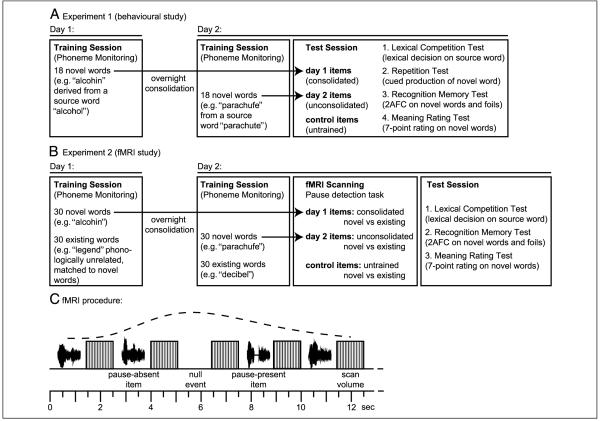Figure 1.
(A) Timeline for Experiment 1. All participants were trained on two sets of novel spoken words on successive days. On the second day, training was immediately followed by a behavioral test session comprising four behavioral tasks assessing different forms of knowledge of the newly learned words. (B) Timeline for Experiment 2. After training on two sets of novel and existing spoken words on successive days, participants were fMRI scanned and completed a behavioral test session assessing different knowledge of newly learned words. (C) Timeline of the fast sparse fMRI procedure illustrating the rapid alternation of stimulus presentation and single scan volumes. Dashed line shows an estimate of the predicted BOLD response to a single stimulus (using the canonical hemodynamic response in the SPM software), illustrating how the expected hemodynamic response is sampled over subsequent scans (cf. Orfanidou et al., 2006; Jacquemot et al., 2003).

